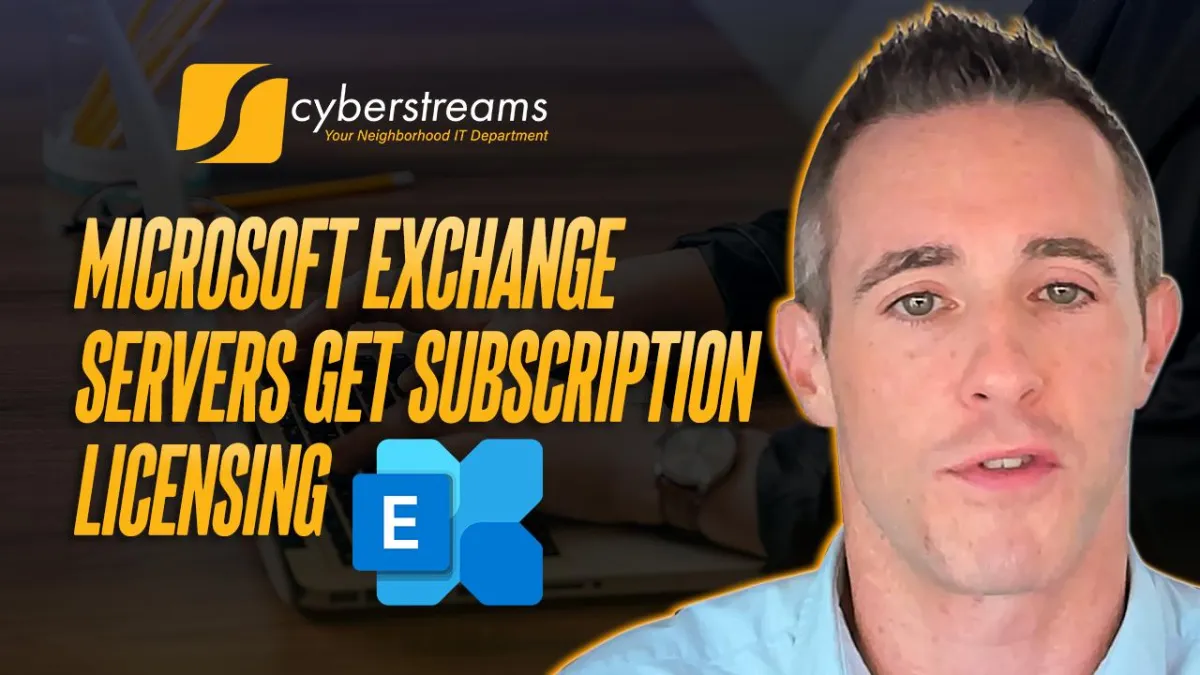
Microsoft Exchange Servers Get Subscription Licensing
If your business still runs on-premises Exchange Servers, Microsoft’s latest move might feel like a nudge, or more like a shove, toward the cloud. With end-of-support dates looming for Exchange Server 2016 and 2019, Microsoft is offering a short lifeline in the form of paid Extended Security Updates (ESUs). But make no mistake, the long-term strategy is clear: a full shift to subscription-based models like Exchange Online or the upcoming Exchange Server Subscription Edition (SE).
Let’s break down what’s changing, what it means for your business, and how to prepare.
Why On-Premises Exchange Is Being Phased Out
Think of on-premises Exchange like a trusty old filing cabinet. It’s familiar and reliable, but it needs constant maintenance, regular patching, and a close eye on physical and cybersecurity. Microsoft has spent years encouraging organizations to migrate to the cloud, where updates are automatic, scalability is seamless, and security is integrated from the start.
If you're still using Exchange 2016 or 2019 and don’t plan to upgrade or migrate before October 14, 2025, you’ll need to purchase ESU licenses. These updates won't include full support, just critical security patches to buy you time.
Why the Push Toward Subscription?
Unpatched on-prem servers are a major security risk. Just look at the 2024 ProxyNotShell attacks, which compromised thousands of Exchange servers and cost businesses millions in damages and downtime, according to BleepingComputer.
Subscription-based solutions like Exchange Online, part of Microsoft 365, offer several key advantages:
Always-on security updates
AI-powered threat detection
Zero hardware management
Improved compliance and uptime
Microsoft’s upcoming Exchange Server Subscription Edition will extend the subscription model to even on-premises deployments, introducing pay-as-you-go pricing and likely eliminating perpetual licensing for future versions.
What the Community Is Saying
Industry voices are making their stance clear. One X user, @ExchangeAdmin, wrote, “Microsoft’s ESU is a band-aid, time to go cloud or bust!” Petri reported on a 2025 case where a mid-sized retailer lost $150,000 due to an unpatched Exchange flaw. That breach forced them to make a rushed migration mid-year.
These stories are becoming more common, and Microsoft’s licensing changes suggest that clinging to legacy systems is no longer sustainable.
Hidden Costs and Considerations
Migrating isn’t free or easy. ESU pricing includes both per-server and per-user fees, which can rival the cost of migrating to Microsoft 365, especially when considering the security risks and operational burden of remaining on-premises.
Microsoft is essentially saying: It’s time to make a decision. The message is clear: subscribe or risk it.
What to Do Next: Three Key Takeaways
1. Assess Your Exchange Setup
Start by inventorying your current Exchange servers. If you plan to stay on-prem past October 14, 2025, reach out to Microsoft immediately to purchase ESU licenses and avoid security gaps.
2. Prioritize Security Now
Ensure your current systems are fully patched and protected. Enable multi-factor authentication (MFA) and monitor activity using solutions like CyberStreams Microsoft 365 Protection.
3. Consider Making the Switch
If the idea of monthly per-user licensing kept you from moving to Microsoft 365, it’s time to reconsider. That flexibility is disappearing. A move to the cloud may now be the smarter long-term investment.
Conclusion
Microsoft’s move to subscription licensing is more than a pricing change; it’s a signal that the future of secure, reliable business email lies in the cloud. While Extended Security Updates may offer a short-term buffer, they are not a permanent solution. Whether you’re planning to upgrade, migrate, or simply stay secure for another year, the time to act is now.
At CyberStreams, we’re here to help you transition with confidence and avoid costly surprises. Don’t wait until October 2025 is around the corner; start planning today.
